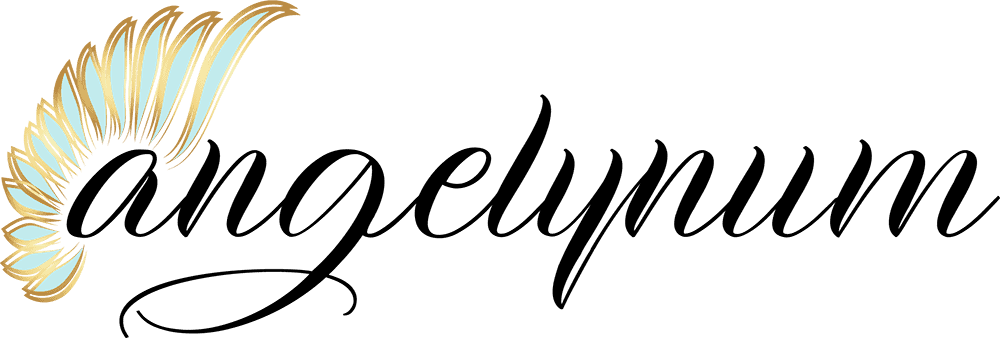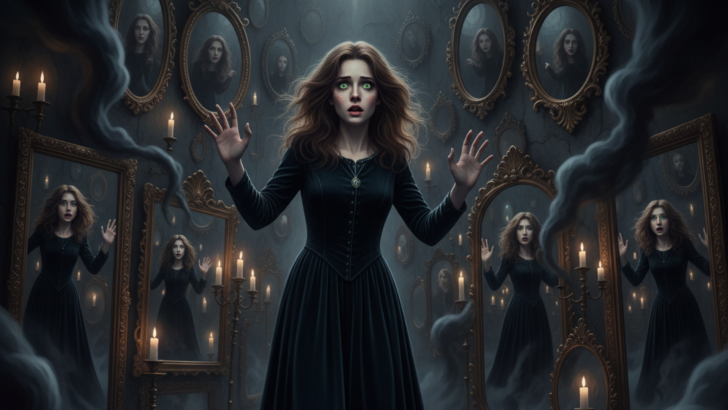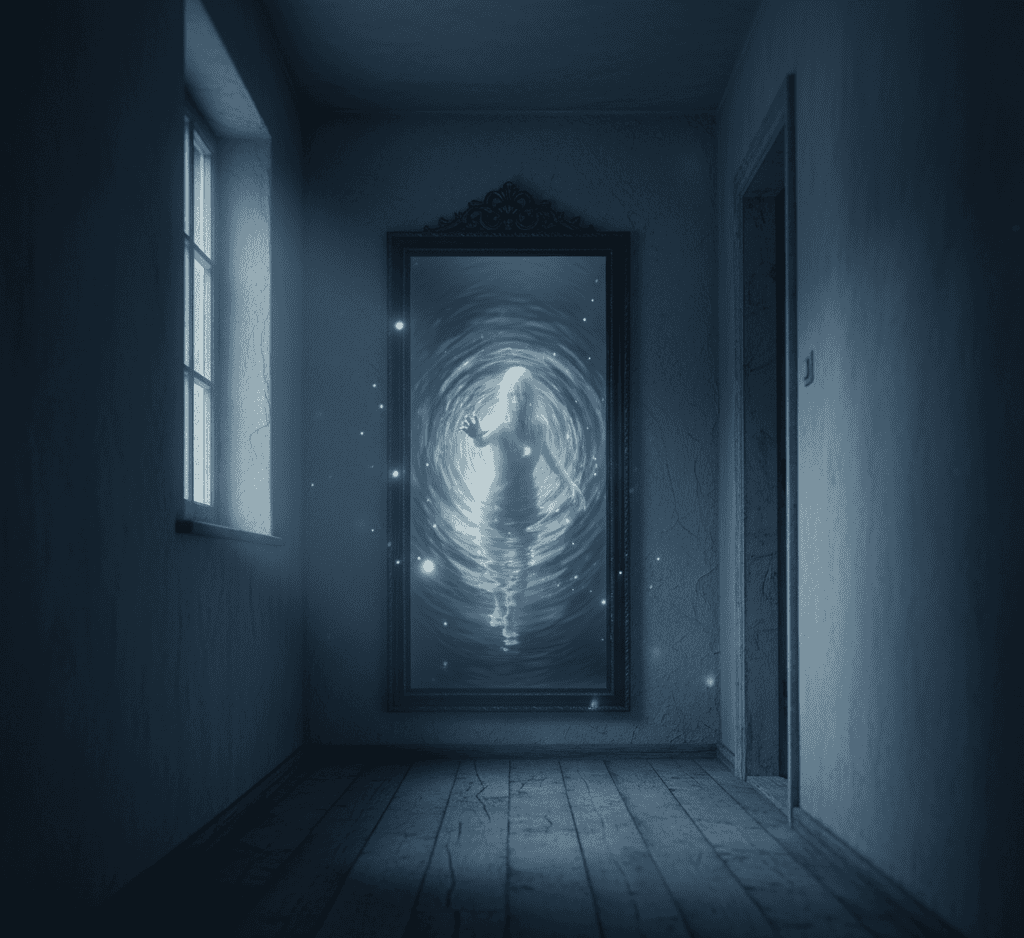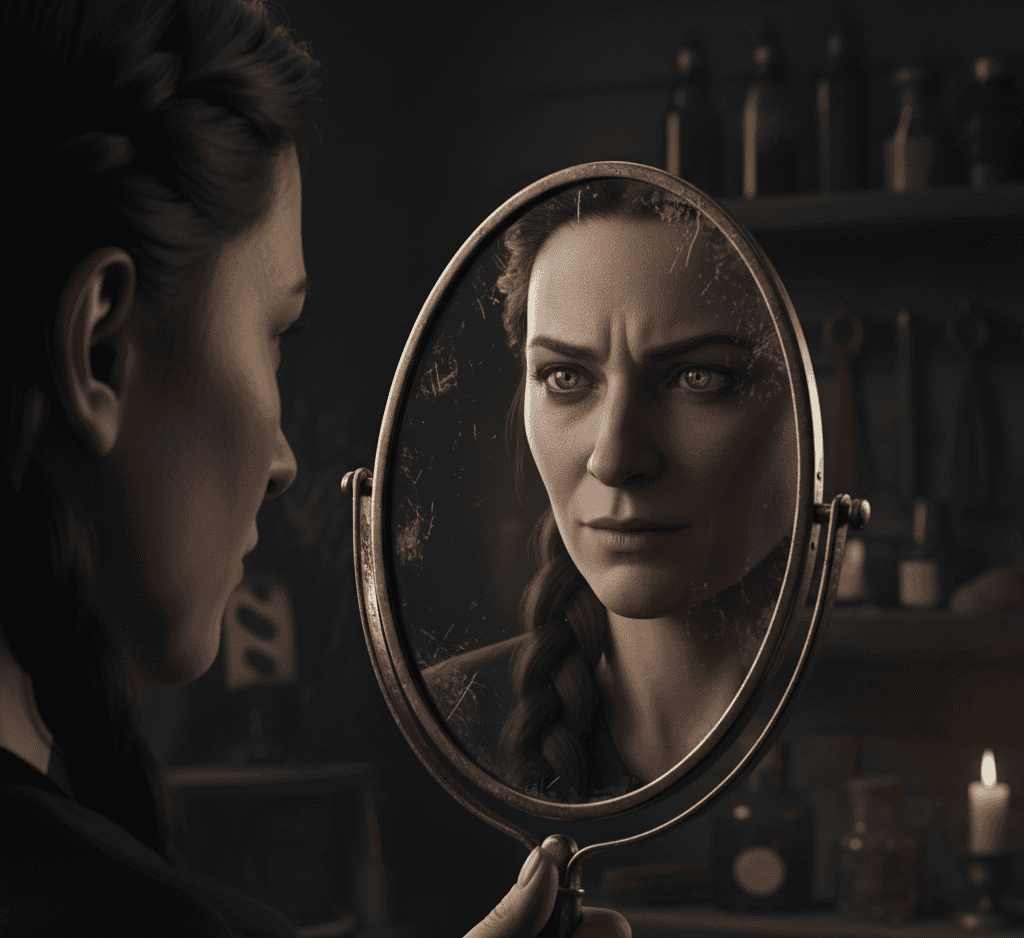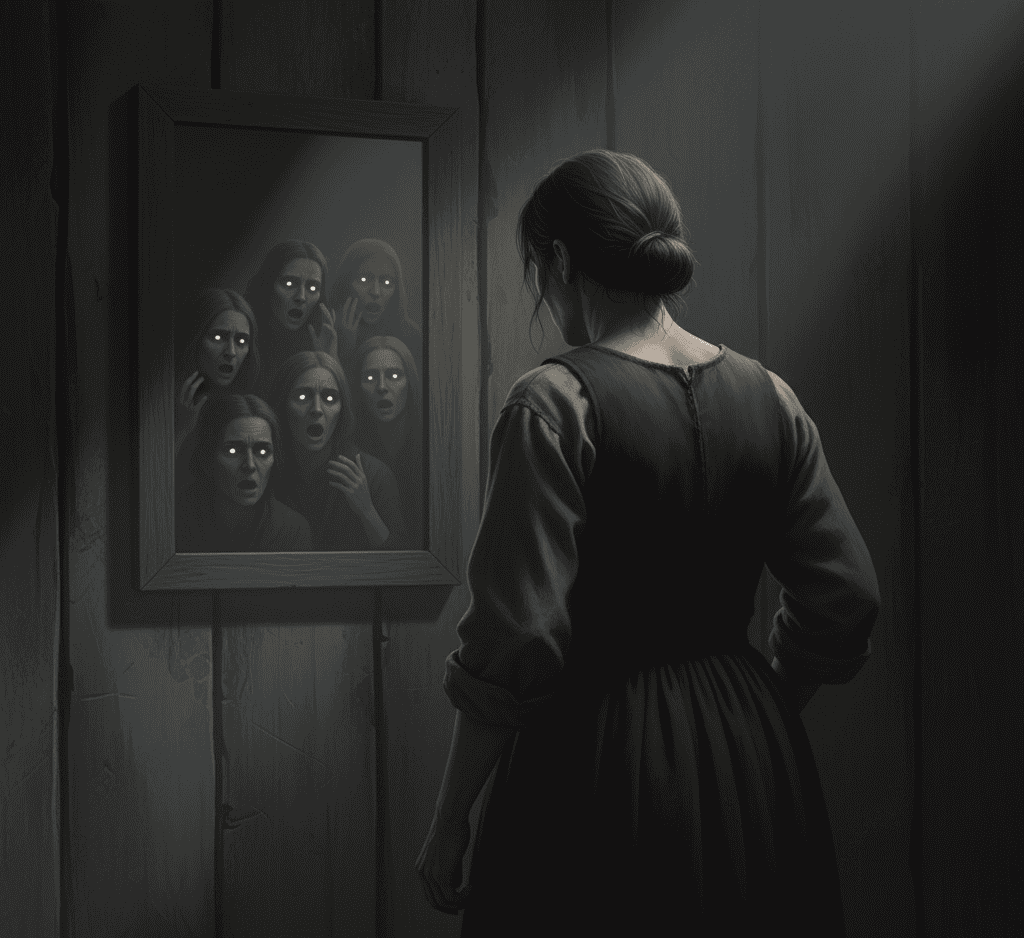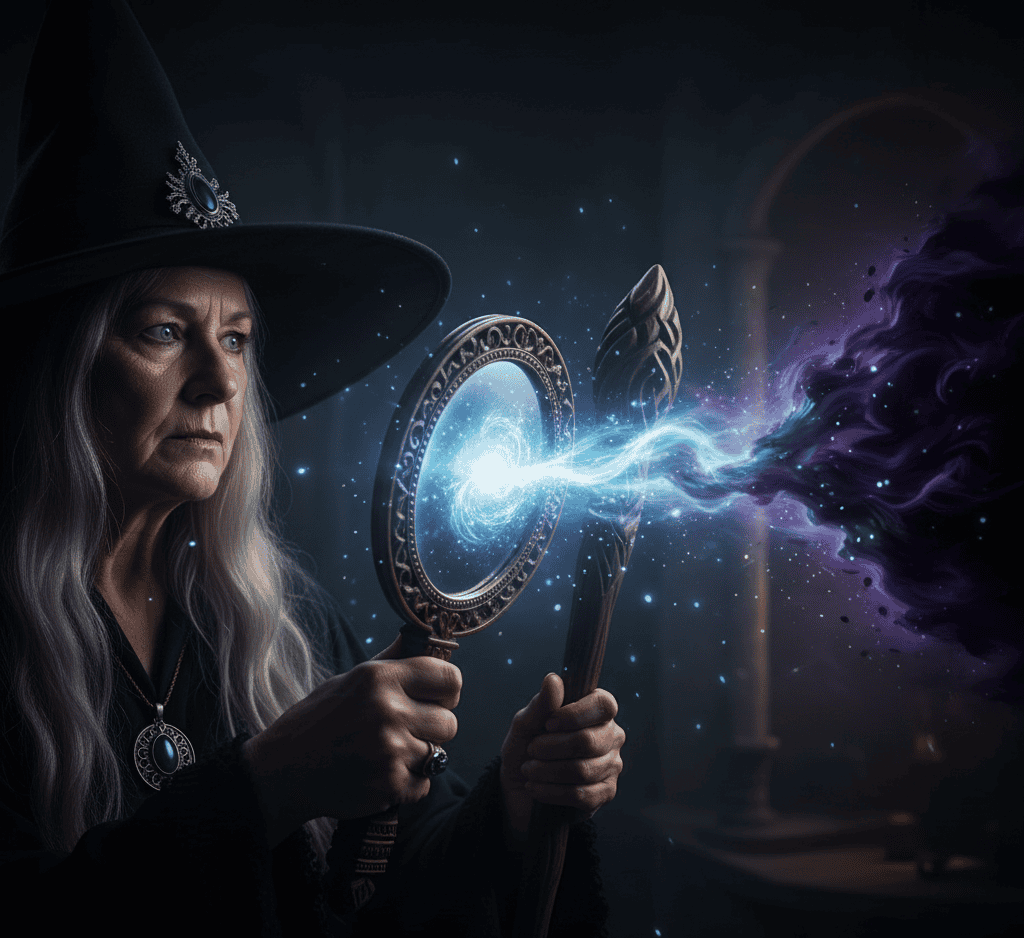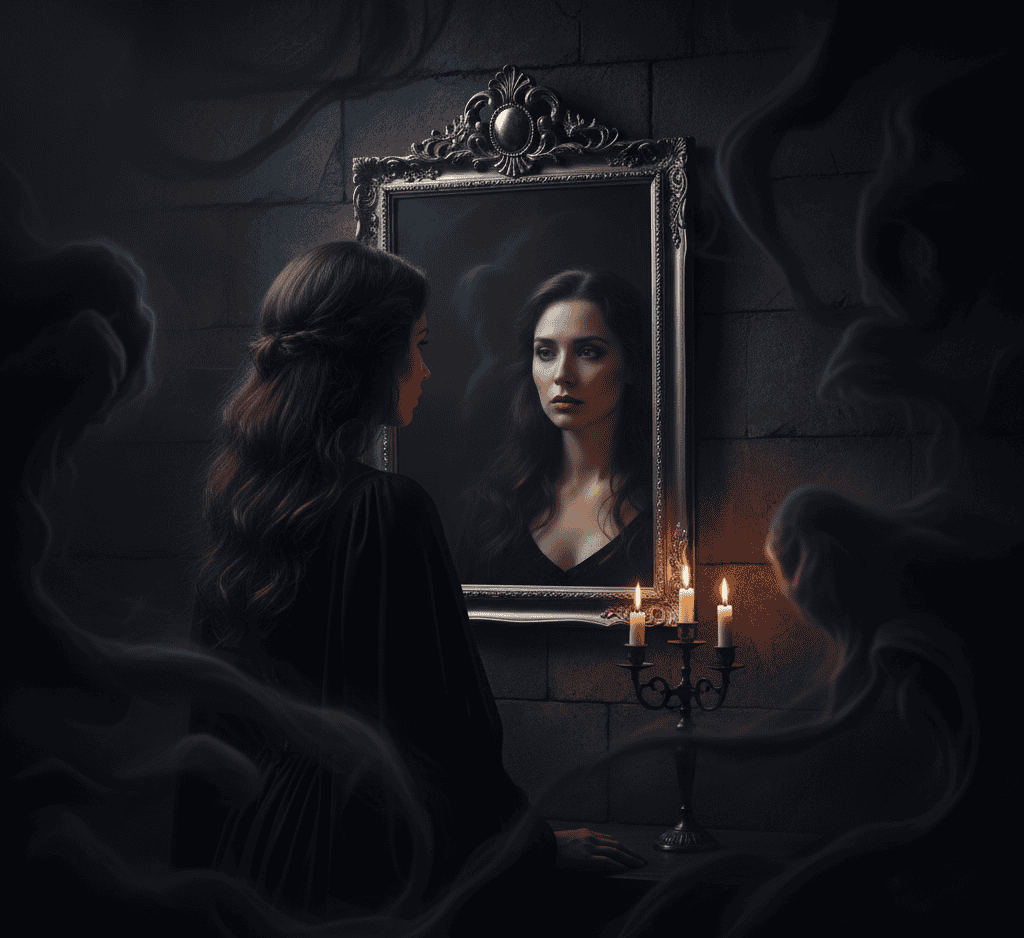In stories about witches, mirrors are almost always bad news. They shatter in haunted houses, trap wandering souls, and reveal things we were never meant to see.
But in Old Europe, long before the days of silver-backed glass, mirrors were not just household tools.
They were mysterious, powerful, and sometimes terrifying. Many witches, it was said, refused to look into them at all. Why?
Because reflections were believed to hold more than an image. They held the truth—too much truth, perhaps, for anyone who practiced magic.
Let’s step into the candlelight and see what made mirrors such a dangerous thing for witches long ago.
The Mirror as a Door, Not a Wall
To us, a mirror is something simple. You use it to check your hair or make sure there’s nothing in your teeth.
But in Old Europe, a mirror was never just glass. It was a thin, trembling surface between two worlds – the living and the unseen.
People believed that when you stared into your reflection, you were not just looking at yourself.
You were peeking into another realm, one where spirits could peer back. For witches, this belief had serious weight.
Many of them were said to use polished metal or bowls of water to “scry,” a kind of ancient vision practice.
They would stare into the reflection until shapes began to move and messages appeared. But such acts were risky.
The line between vision and possession was a thin one. There were stories of witches who gazed too long and saw something that never stopped watching them in return.
So the mirror became a test of courage and restraint. A witch might use it to speak to the other side, but she knew it could also pull her there.
Better to keep her eyes down and her mirror covered than to risk meeting something that wanted out.
The Reflection That Wasn’t You
Another fear ran even deeper—the belief that a reflection could take on a life of its own.
Some old folktales spoke of “mirror selves,” ghostly doubles that mimicked every movement but carried no soul.
In parts of Eastern Europe, people whispered that mirrors could steal a person’s essence.
If your reflection moved without you, it meant the mirror had captured your spirit.
For witches, who were already seen as walking the line between the natural and the supernatural, this idea was terrifying.
Magic was all about control of herbs, of energy, of will. To lose control of your own reflection meant losing the self entirely.
Some said that if a witch stared too long into her own eyes, she would see not herself but the truth of what she had become. And not every witch was ready to face that truth.
Because mirrors were thought to hold fragments of the soul, many witches in old stories refused to keep them uncovered at night.
Some even covered mirrors during spells or when someone in the household died, afraid that a wandering spirit might slip inside.
To look into a mirror at the wrong time, especially at midnight or by candlelight, was an invitation for something else to look back.
Mirrors and the Fear of Judgment
Beyond the mystical, there was something deeply human behind this fear. Life for women accused of witchcraft was already full of judgment.
They were watched, whispered about, and blamed for everything from storms to spoiled milk.
In a way, the mirror became a symbol of the judgment they faced. It reflected not only their faces but the way the world saw them.
Imagine being a woman in a small European village centuries ago. People think you are strange because you heal with herbs or live alone.
The church warns that vanity is sinful and that mirrors tempt pride. You hear that women who spend too long admiring themselves are in league with the devil.
Even if you only look to wash your face, it feels wrong. So mirrors became guilty objects – proof of pride, vanity, or witchcraft.
A woman who owned too many could be accused of being obsessed with beauty or magic. And yet, avoiding mirrors completely could seem suspicious too.
Some witches in legend smashed their own mirrors to show they had nothing to hide, while others buried them in the ground to silence whatever might be whispering through the glass.
It was not only fear of spirits but fear of being seen by others, by oneself, by something divine that made witches turn away from their reflections.
The Mirror’s Secret Power
For all their fear, witches were also said to understand the secret power of mirrors better than anyone.
In many old stories, they used them not just for seeing but for bending reality. A mirror could reflect a curse back to the one who sent it.
It could protect a home by confusing evil spirits, who might become trapped inside the shining surface.
Some witches made small charm mirrors and wore them under their clothes to deflect bad luck.
Others placed mirrors facing outward near doors or windows to keep dark forces from entering.
In these tales, the mirror was both enemy and ally – a dangerous tool that had to be respected.
But that respect often came with fear. A witch knew that every reflection had two sides, and every spell cast through glass might carry a hidden echo.
To use a mirror was to gamble with your own image, and if the reflection didn’t like what it saw, it might strike back.
One old German legend tells of a witch who used her mirror to spy on her enemies.
She became so obsessed with what she saw that her reflection eventually stepped out of the glass and took her place in the world. The mirror, they said, kept the real witch forever inside.
What the Fear Still Teaches Us
Today, most of us don’t think twice about mirrors. We check them before leaving the house or when brushing our teeth.
But deep down, something about them still feels strange. We all know that moment when we look too long and feel uneasy, like the reflection isn’t just glass and light.
Maybe the old witches knew something we forgot – that mirrors don’t just show what’s there, they show what we hide.
The stories of witches fearing their reflections were never only about superstition. They were about facing truth, identity, and the power of self-knowledge.
Mirrors remind us that seeing ourselves clearly can be the hardest kind of magic. They challenge us to confront what we are, not what others say we are.
For the witches of Old Europe, that reflection might have been too heavy to bear. To look into their own eyes was to see every accusation, every secret, every whispered spell.
Better to turn away than risk meeting a version of themselves they couldn’t recognize or couldn’t control.
So maybe their fear was not foolish at all. Maybe they simply understood that mirrors, like people, have depths that can’t be measured.
And sometimes, when the candlelight flickers just right, it’s best not to look too closely at what’s staring back.

Ho sempre sentito una forte connessione con il Divino fin dalla mia nascita. Come autrice e mentore, la mia missione è aiutare gli altri a trovare l'amore, la felicità e la forza interiore nei momenti più bui.
